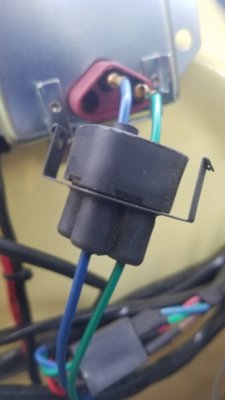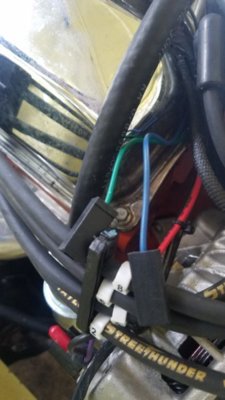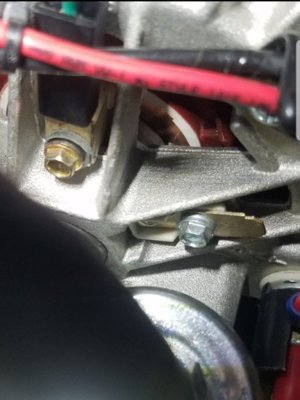TA726
Member
- Local time
- 6:51 PM
- Joined
- Sep 19, 2018
- Messages
- 21
- Reaction score
- 37
Ok fellas, I'm coming to the forum for some technical help on my charging system for this 1969 Coronet 383. I have done my research, search the threads and read through a lot of discussions already on the same topic and still have not been able to figure out why I cannot get my charging system operating. The voltage regulator on the firewall has battery voltage at the blue terminal, the green wire going from the voltage regulator to the alternator is good (I ran a jumper across to the alt anyway just to be sure). The alternator has been removed and bench tested to be putting out 13.4 volts. The voltage regulator was bought brand new and ohm tested before installation. I have ran additional grounds from both the voltage regulator and alternator just to be certain that wasn't an issue. I also went behind the gauge cluster and jumped the ammeter gauge terminals and still have not been able to get anything other than battery voltage (12.4v) coming off the main terminal of the alternator.
I can get output voltage to climb if I jump both the blue and green wire together on the voltage regulator.
I have pictures of my setup for reference. Any help would be appreciated.
Thanks in advance.
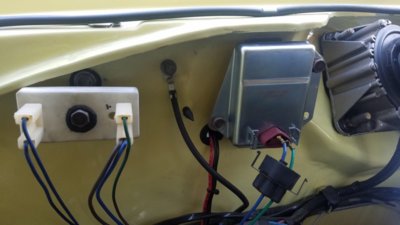
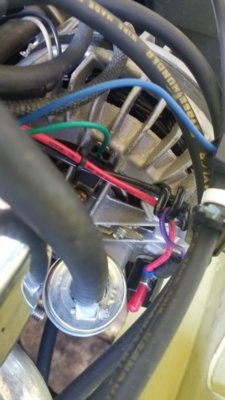
I can get output voltage to climb if I jump both the blue and green wire together on the voltage regulator.
I have pictures of my setup for reference. Any help would be appreciated.
Thanks in advance.



